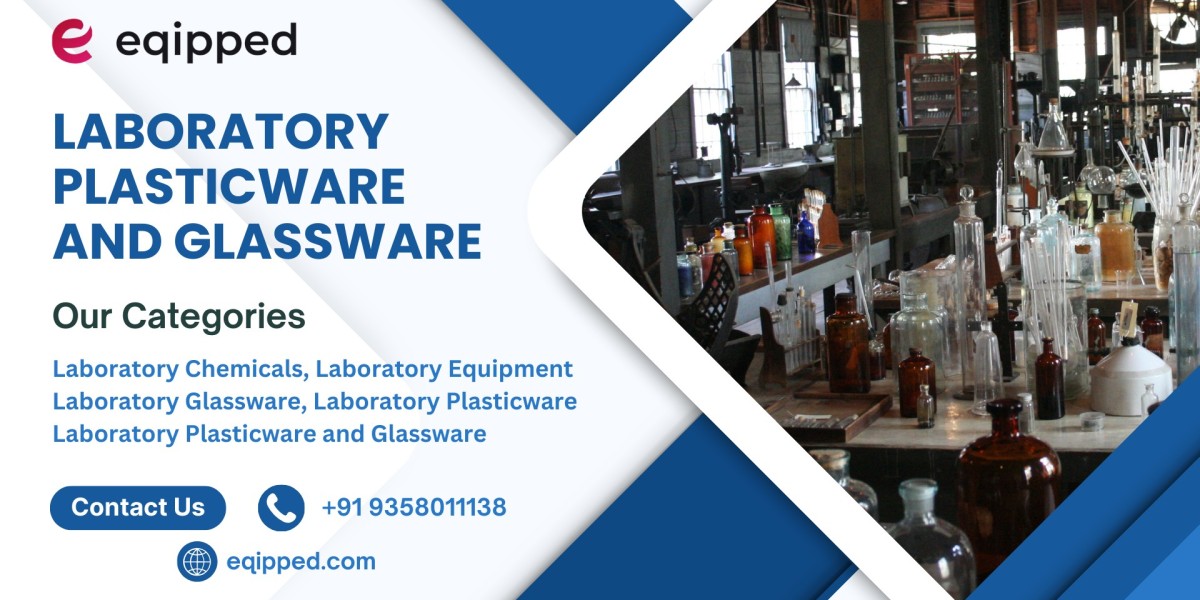Whether you're equipping a school lab, clinical testing space, or advanced research facility, choosing the right labware is critical. From mixing solutions to culturing cells, laboratory plasticware and glassware form the foundation of safe, accurate, and efficient lab operations.
At Eqipped, our thoughtfully curated Laboratory Plasticware and Glassware collection brings you the best of both materials—designed to enhance workflow precision, safety, and budget balance.
Why Laboratory Plasticware and Glassware Are Both Essential
Adaptable Usage: Everyday tasks—from heating to storage—require different materials depending on temperature, chemical resistance, and precision.
Safety vs Precision: Plasticware minimizes breakage risk, while glassware delivers clear visuals and measurement accuracy.
Value for Money: Plasticware meets high-turnover needs cost-efficiently, while glassware provides long-term durability.
Efficient Workflow: Choosing the right material for each task prevents errors, saves time, and supports better outcomes.
Strengths of Plasticware in the Lab
Break-Resistant Safety: Ideal for high-traffic environments like student labs where glass breakage is a concern.
Lightweight Handling: Perfect for repeated tasks or handling large volumes with ease.
Cost-Effective: Ideal for disposable or bulk handling needs.
Durable & Sterilizable: High-quality plastics, such as polypropylene, withstand sterilization and many chemicals, offering reliable reuse.
Why Glassware Still Wins for Certain Applications
Superior Heat & Chemical Resistance: Glass tolerates high-heat processes and corrosive reagents—crucial in many scientific experiments.
Precision-Crafted Accuracy: Items like volumetric flasks and burettes ensure highly precise measurements.
Long-Term Cost Efficiency: Although initially pricier, glassware delivers cumulative savings through longevity.
Superior Clarity: Glass allows better observation and accurate reading of meniscus levels, reaction color changes, and clarity.
Quick Comparison: Plasticware vs Glassware
| Feature | Plasticware | Glassware |
|---|---|---|
| Breakage Risk | Very low—safe and durable | Higher—requires careful handling |
| Weight & Handling | Lightweight and ergonomic | Heavier—less comfortable for repetitive use |
| Cost & Affordability | Low-cost, ideal for disposables | Higher cost, but long-lasting |
| Heat & Chemical Use | Moderate—material dependent | Excellent—ideal for demanding lab tasks |
| Measurement Accuracy | Good for general use | High—ideal for analytical precision |
| Long-Term Value | Good value for high-volume use | Long lifespan when properly maintained |
Matching Material with Task
Choose Plasticware For:
Daily high-volume tasks needing speed and safety
Tasks involving moderate chemical use with limited precision needs
Environments prone to breakage or spill risk
Choose Glassware For:
Processes requiring accurate, high-precision measurements
High-temperature or corrosive chemical work
Long-term, sustainable use with visual clarity and consistency
Maintenance Tips for Each Material Type
Plasticware:
Opt for sterilizable, chemical-resistant materials like polypropylene where needed.
Replace cloudy or damaged items to avoid contamination.
Clean using mild detergents, and avoid harsh chemicals or abrasive tools.
Glassware:
Inspect for chips or cracks before each use.
Heat gradually to avoid thermal stress.
Use soft brushes for cleaning and store on padded racks to avoid damage.
What You’ll Find in Our Collection
Beakers, Funnels & Cylinders — For mixing, measuring, and transfers
Test Tubes, Culture Plates & Petri Dishes — Ideal for sample processing and culturing
Pipettes & Volumetric Gear — Designed for top-tier measurement accuracy
Storage Containers & Bottles — Secure, contamination-free storage solutions
FAQs: Everything You Need to Know
Q1: Does plasticware affect results?
Plastic can work for general tasks, but for high-precision labs, glassware is recommended due to its chemical stability and clarity.
Q2: Can all plasticware be sterilized?
Only certain types, like polypropylene, are made for heat sterilization. Always check product specs.
Q3: Does glassware offer better value?
Yes—despite higher upfront cost, it pays off through durability and precise use.
Q4: Is glass always better for clarity?
Absolutely—glass provides unmatched transparency, especially important for mixing observations and titrations.
Q5: Can I mix both materials in my lab?
Definitely! A smart lab uses both—plasticware for convenience and safety, glassware for precision and stability.
Final Thoughts
“Laboratory plasticware and glassware” isn’t about choosing one over the other—it’s about smart, task-specific solutions. Use each where they offer the most benefit.
At Eqipped, our collection empowers your lab with both types of labware—designed for your workflow, safety, and scientific success.
Ready to equip your lab smarter? Explore our Laboratory Plasticware & Glassware selection today.









